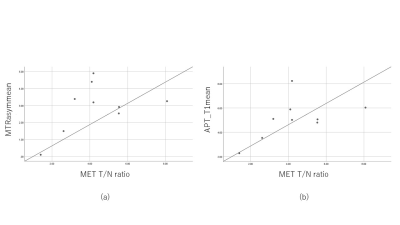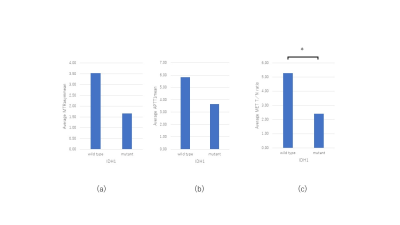Yasukage Takami1, Naruhide Kimura1, Katsuya Mitamura1, Takashi Norikane1, Keisuke Miyake2, Tatsuya Yamasaki3, Kazuo Ogawa3, Mitsuharu Miyoshi4, and Yoshihiro Nishiyama1
1Department of Radiology, Faculty of Medicine, Kagawa University, Miki-cho, Japan, 2Department of Neurological Surgery, Faculty of Medicine, Kagawa University, Miki-cho, Japan, 3Department of Clinical Radiology, Kagawa University Hospital, Miki-cho, Japan, 4Global MR Applications & Workflow, GE Healthcare Japan, Hino-shi, Japan
1Department of Radiology, Faculty of Medicine, Kagawa University, Miki-cho, Japan, 2Department of Neurological Surgery, Faculty of Medicine, Kagawa University, Miki-cho, Japan, 3Department of Clinical Radiology, Kagawa University Hospital, Miki-cho, Japan, 4Global MR Applications & Workflow, GE Healthcare Japan, Hino-shi, Japan
Several correlation coefficients between MTRasymmax and T/N ratio,
MTRasymmean and T/N ratio, APT_T1max and T/N ratio, and APT_T1mean and T/N
ratio were relatively high (r = 0.38, 0.46, 0.49, and 0.53, respectively), but
not statistically significant.

